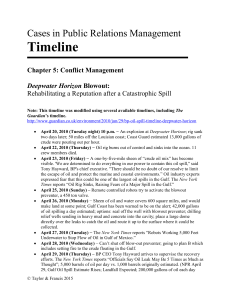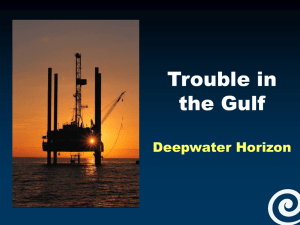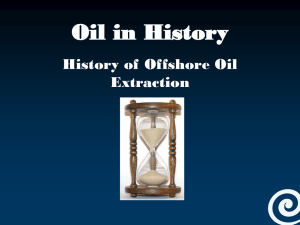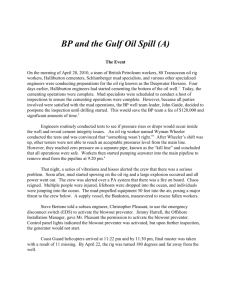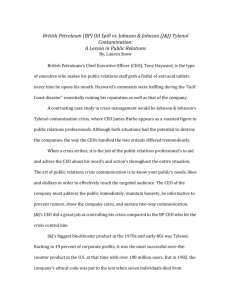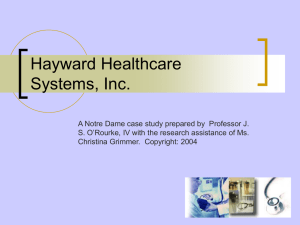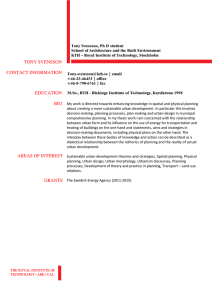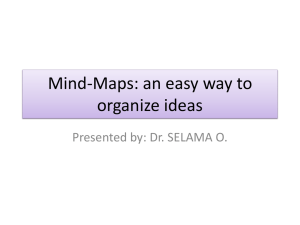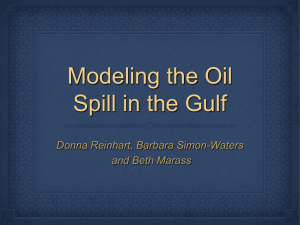BP Claims Process
advertisement
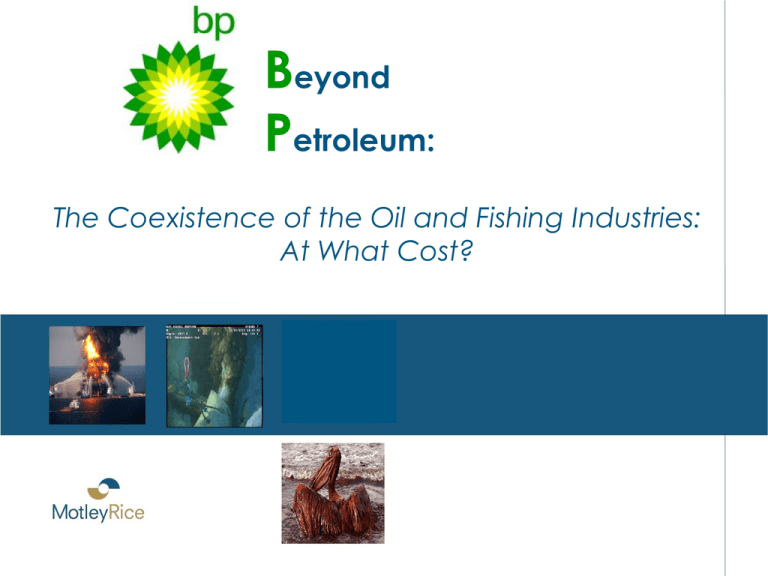
Beyond Petroleum: The Coexistence of the Oil and Fishing Industries: F At What Cost? From the Mouths of Babes 2 Deepwater Horizon Disaster April 20, 2010 3 The Damage Done 4 BP has said this “accident” was unforeseeable… 5 Notice Ixtoc Oil Spill 1979 On June 3, 1979, the Mexican government's oil company Pemex was drilling a deep oil well in the Gulf of Mexico when the well suffered a blow out resulting in one of the worst oil spills in human history. At the time of the incident the drilling was conducted at about 11,800 feet below the sea floor. 6 Notice Ixtoc Oil Spill 1979 In the initial stages of the spill, an estimated 30,000 barrels of oil per day were flowing from the well. In July 1979, the pumping of mud into the well reduced the flow to 20,000 barrels per day, and early in August the pumping of nearly 100,000 steel, iron, and lead balls into the well reduced the flow to 10,000 barrels per day. A total of 3.3 million barrels entered the Gulf of Mexico as a result. Compare current BP 2010 disaster: 60,000 barrels a day 7 Notice Ixtoc Oil Spill 1979 An average of about 10 to 30 thousand barrels a day were discharged into the Gulf. The well was finally capped on March 23, 1980, nearly 10 months later. Ultimately, 71,500 barrels of oil impacted 162 miles of U.S. beaches. 8 Safety Violations 2000 – In February, BP crew in the Gulf of Mexico pushed the wrong button severing the rig from the blowout system causing an oil leak. - Mineral Management Service Safety Alert No.186, March 3, 2000 2002 – California officials allege BP falsified inspections of fuel tanks at a Los Angeles refinery and more than 80% of the facilities didn’t meet requirements to maintain storage tanks without leaks or damage. BP settled a lawsuit brought by the South Coast Air Quality Management District for more than $100m. - Reports at BP over years find history of problems, The Washington Post, June 8, 2010, by Abraham Lustgarten and Ryan Knutson 9 Safety Violations 2005 – A BP Texas City refinery exploded, killing 15 people. The investigation uncovered that a warning system failed and that “significant process safety issues exist at all five U.S. refineries, not just Texas City.” 2006 – In March, more than 200,000 gallons of oil spilled from a corroded hole in the Prudhoe Bay pipeline in Alaska. Inspectors found that several miles of the steel pipe had corroded to dangerously thin levels. BP had received multiple warnings about their Alaskan pipelines since 2002. - Reports at BP over years find history of problems, The Washington Post, June 8, 2010, by Abraham Lustgarten and Ryan Knutson 10 Safety Violations October 25, 2007, the Justice Department settled with BP at $20 million in penalties and three years' probation, $12 million of criminal fine. - May 19, 2010 Panel I of a Hearing of the House and Transportation and Infrastructure Committee 2008 – In September, a section of gas pipeline on an Alaskan slope blew apart, flying nearly 1000 feet through the air before landing on the tundra. 2009 – Three separate accidents plagued the same Alaskan pipeline system, one of which was a near-catastrophic explosion. Congress sent a letter to BP stating these accidents were a result of malfunctioning safety and backup equipment. - Reports at BP over years find history of problems, The Washington Post, June 8, 2010, by Abraham Lustgarten and Ryan Knutson 11 Safety Violations The blowout preventer is BP’s “key failsafe mechanism” the House and Testimony of Lamar McKay, President of BP May 19, 2010, Panel I of a Hearing of Transportation and Infrastructure 12 Safety Violations Deepwater Horizon seamen discovered a BOP leak two weeks before the blowout in early April of 2010. On July 21, 2010 it was revealed that 45% of BOP's fail. Safe Device, June 20, 2010. - Regulators Failed to Address Risks in Oil Rig FailNew York Times, 13 Tony Hayward, CEO of BP 14 BP’s Public Statements – Day 9 “What the hell did we do to deserve this?” BP Chief Tony Hayward Oil Spill’s Blow to BP’s Image May Eclipse Costs, New York Times, April 29, 2010 15 Safety Violations “First is this whole issue of the ultimate safety device, the blowout preventer failing. If the blowout preventer had functioned as intended, we would be dealing with a very serious industrial accident, but we wouldn’t be dealing with an oil spill.” BP CEO Tony Hayward In His Own Words: Forbes Q&A with BP’s Tony Hayward, Forbes.com, May 18, 2010, by Christopher Helman 16 BP’s Public Statements – Day 24 “The Gulf of Mexico is a very big ocean. The amount of volume of oil and dispersant we are putting into it is tiny in relation to the total water volume.” Tony Hayward, BP CEO - May 14, 2010 17 Willful and Wanton Conduct “The oil is on the surface…” “There aren’t any plumes.” BP sampling showed “no evidence” that oil was suspended in large masses beneath the surface. Meanwhile, a twenty-two mile long, six mile wide and more than a thousand feet deep plume was being reported by the University of South Florida and other Southeastern educational institutions. BP CEO Tony Hayward BP CEO disputes claims of underwater oil plumes, AP, May 30, 2010 18 BP’s Public Statements – Day 28 Tony Hayward, BP CEO: “I think the environmental impact of this disaster is likely to be very, very modest.” - May 18, 2010 19 BP’s Public Statements – Day 27 “The Gulf of Mexico spill response plan is four inches thick. It’s approved every two years.” BP CEO Tony Hayward In His Own Words: Forbes Q&A with BP’s Tony Hayward, Forbes.com, May 18, 2010, by Christopher Helman 20 BP Oil Spill Response Plan The covers of the five response plans are 4 different colors, but the content is 90 percent identical. Like BP, three other companies include references to protecting walruses, which have not called the Gulf of Mexico home for 3 million years.” “…the only technology [the oil companies] seem to be relying upon is a Xerox machine to put together [their] response plans…” - Representative Edward J. Markey “Drilling Down on America’s Energy Future: Safety, Security, and Clean Energy” Hearing before the Committee on Energy and Commerce June 15, 2010 21 Transocean MR. HAYWARD: This wasn't our accident. This was a drilling rig operated by another company. It was their people, their systems, their processes. “We are responsible, not for the accident, but we are responsible for the oil and for dealing with it and cleaning the situation up.” MR. STEPHANOPOULOS: You're not responsible for the accident? MR. HAYWARD: The drilling rig was a Transocean drilling rig. It was their equipment that failed. It's their systems and processes that were running it. - ABC “Good Morning America” Interview with Tony Hayward, British Petroleum Chairman; Subject: Gulf Coast Oil Spill, May 3, 2010 22 Who is Responsible? THE CORPORATIONS Owners of Mississippi Canyon Block 252 license where the well was drilled. Halliburton Energy Services Inc, provided drilling services on the rig. Halliburton was in the process of cementing the wellhead when the blowout occurred. As for BP, The Partners are liable for costs in proportion to their holdings. BP Leased the Deepwater Horizon rig from Transocean, The world’s largest offshore drilling firm based in Switzerland. The Blowout equipment which failed on the Deepwater Horizon rig was maintained by Cameron International Corp, a subsidiary of Transocean. 23 Corporate Finger-pointing 24 Tony Haywood, BP CEO “I’d like my life back.” BP CEO Tony Hayward Business Insider, June 2, 2010, by Gus Lubin 25 Selling the Fund The BP Fund: Kenneth Feinberg “Mr. Fairness” The Oil Protection Act 1990 Multi-District Litigation New Orleans, LA 26 BP Claims Process 27 BP's USA Today full page AD on the Claims Process: June 10th, 2010 What’s happening within the BP Claims Processing "When we talk, we'll help people determine what documents they need. We will be in touch in four days or less and can issue them a check right on the spot.“ - June 10, 2010 50 million dollars spent by BP on advertising alone in May 2010. 29 What’s really happening within the BP Claims Processing Compare what our clients were told by BP claims officials the same time this full page national ad and PR campaign ran: “Well, we don’t actually have any checks… yet” 6/10/2010 (BP claims personnel) “We may get checks next week…” 6/11/2010 (BP claims personnel) 30 What’s really happening with the BP Claims Processing While BP was claiming it was “mak[ing] this right,” BP had policemen and police cars at every distribution center to welcome the fishermen. And for those trying to forget Hurricanes Katrina or Wilma or Ivan? “Think of me like an adjuster…” 6/10/2010 (BP claims personnel) 31 BP Claims Process BP’s “adjusters” are given a script and using a matrix and intentionally beating down people in need. As of Tuesday, June 15, 2010, BP adjusters had paid less than 12% (twelve percent) ($71 million dollars out of an estimated $600 million) of submitted claims for relief by individuals and businesses impacted in the Gulf. - House of Representatives, Committee on the Judiciary, 6/15/2001 32 BP Fund 33 BP Fund 34 BP Fund 35 BP Fund 36 BP Fund 37 BP Fund 38 Stabilizing the Industry Lifting the Moratorium on Drilling October 2010 Threats of Pulling out of Gulf 11% of BP’s Revenue from the Gulf Are the rigs any safer? Is the fishing industry any more secure? 39
